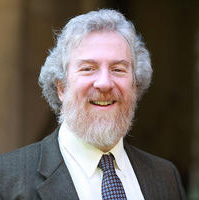Study of Ritual—Study as Ritual (Part 2)

Last week, we looked at the three blessings recited traditionally each day, affirming that the study of Torah is a mitzvah, a source of beauty for all generations, and that God is (continually) giving Torah (Siddur Sim Shalom for Weekdays, 4). Today we explore an unusual type of textual engagement that follows these blessings, both immediately and through the unfolding cycle of the siddur. The blessings are followed directly by three texts (ibid., 5): the birkat kohanim (Priestly Blessing, Num, 6:24–26); a selection from the Mishnah (Pe’ah1:1); and a selection from the Talmud (BT Shabbat 127a). Each of them is intriguing.
The Priestly Blessing is found in multiple places in the liturgy: in the “reader’s repetition” of the ‘Amidah, and on Shabbat eve at home, when parents bless their children. Traditionally, the text is recited word by word by the contemporary descendants of the kohanim in a powerful ritual during the Musaf (additional service) on festival days. In the morning liturgy, however, the text is not an act of blessing offered by one person (or group) to another, but a text for study. There is a vast array of commentaries on the text that delve into the language, structure, and context of the words. The encounter with these verses so early in the morning, after the blessings for study, invites us perhaps to explore and delve into the meaning of blessings in general, and of these ancient words of blessing especially.
The immediate succession of selections from rabbinic literature affirms a critical value: these rabbinic texts are themselves Torah. The brilliant introduction by the Rabbis of the concept of the “Dual Torah” asserts that the word Torah does not simply reference a single, completed text: the term Torah she-bikhtav (Written Torah) refers to the Five Books (Genesis to Deuteronomy); Torah she-be’al peh (Oral Torah) refers to the expansive texts of the rabbinic period, and is applied by some scholars to writings and teachings of even our own times. Our rabbis do not write commentaries, they write “Torah.” The selections taken together imply that study of Torah is infinite and of infinite value, and they identify core values such as visiting the sick, comforting mourners, and making peace that derive from Torah and are understood to be a consequence of engaging in its study.
While a single lecture or seminar on these texts may well be fascinating, the daily encounter drives these values from the analytic to the subconscious mind. We internalize the values—and the development of intricate and beautiful musical settings emphasizes this point. We adorn these rich and fascinating texts through music because our encounter with the texts transcends “mere” engagement with the ideas.
A little later in the daily service, the traditional siddur offers an array of texts (biblical and rabbinic) concerned with the sacrificial system on the basis that, absent the ability to offer the sacrifices, study of the relevant laws is the next best thing. The Conservative Movement replaces texts about sacrifices with texts about acts of tzedakah and hesed (ibid., 9–11).
The ritualized use of rabbinic texts occurs on other occasions, as well. For example. on Shabbat and festivals, the Musaf service concludes with a series of texts from the Talmud concerning the spices added to sacrificial offerings and the psalms recited by the Levites each day in Temple times. This material is followed by the famous Amar Rabbi Elazar text that affirms the value of scholarship as a source of peace in the world, ending (as does the birkat kohanim) with the request that God bless the people of Israel with Peace (Ps. 29:11; Siddur Sim Shalom for Shabbat, 182).
There are numerous settings of Amar Rabbi Elazar:
Here is a well-known setting by the Boston-based group Safam(start at 1’02”).
Listen to the classic cantorial setting of Moshe Oysher presented by the Wizards of Ashkenaz—cantors Sidney Ezer, Jonathan Schultz, Matthew Klein, and Yakov Hadash—at their senior recital at JTS, preceding their ordination by the H. L. Miller Cantorial School and College of Jewish Music of JTS in 2011.
The final element of this passage is based entirely upon biblical quotations, beginning with the words “lema’an ahai ve-re’ai” (For the sake of my brothers and friends; Ps. 122:7). Here the composition of Rabbi Shlomo Carlebach is presented by his daughter Neshama, singing with the choir of the Greener Pastures Baptist Church.
As always, I am interested in hearing comments and reflections on these thoughts about prayer and liturgy. You may reach me at sabarth@jtsa.edu.



